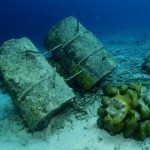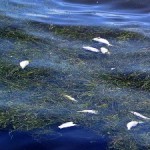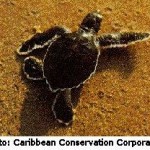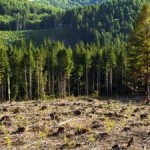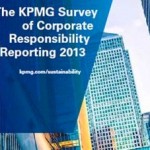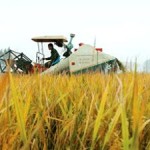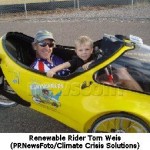
Nairobi – The rush for resources prompted by an apparent acceleration in sea ice melt calls for caution and effective governance to avoid damage to the fragile Arctic environment, according to the United Nations Environment Programme‘s Year Book 2013.
The report, which each year outlines major emerging issues for the global environment, also highlights the need for better information and sound management to minimize the risks from chemicals and raises the issue of the recent spike in the illegal trade in elephant ivory and rhino horn.
A reduction in Arctic summer ice cover has become more intense in recent years, culminating in a record low of 3.4 million square kilometres in 2012 – 18 per cent below the previous recorded minimum in 2007 and 50 per cent below the average in the 1980s and 1990s. Land ice is also retreating and permafrost is melting.
The retreating ice brings easier access to natural resources such as gas and oil, thus prompting increased human activity that may threaten the already fragile ecosystems and wildlife, the report says.
“Changing environmental conditions in the Arctic – often considered a bellwether for global climate change – have been an issue of concern for some time, but as of yet this awareness has not translated into urgent action,” said UN Under-Secretary-General and UNEP Executive Director Achim Steiner.
“In fact, what we are seeing is that the melting of ice is prompting a rush for exactly the fossil fuel resources that fuelled the melt in the first place,” he added. “As the UNEP Year Book 2013 points out, the rush to exploit these vast untapped reserves have consequences that must be carefully thought through by countries everywhere, given the global impacts and issues at stake.”
As ice and snow recede, making access and transport easier, the Arctic is expected to play a greatly expanded role in world energy and minerals supplies.
The U.S. Geological Survey estimates that 30 per cent of the world’s undiscovered natural gas is in the Arctic, largely on the continental shelves beneath the Arctic Ocean. More than 70 per cent of the undiscovered oil resources in the Arctic are estimated to be held in northern Alaska, the Amerasian Basin, the eastern side of Greenland and other areas.
One insurance company expects up to US $ 100 billion in Arctic investment in coming decade, largely in the minerals sector. Exploration and mining are accelerating, triggering construction of roads, ports and new settlements.

Receding sea ice is also opening up the Northern Sea Route and the Northwest Passage for shipping for parts of the year. Some countries have estimated that the Northern Sea Route would be turned into a shipping highway “of global importance”, with a 40-fold increase in shipping by 2020.
Additionally, there is likely to be a boom in fisheries, as a widely predicted northward shift in sub-arctic fish species, including Atlantic and Pacific cod, is now being detected. One study predicts that by 2055, fish catches in the high latitudes, including the Arctic, could increase by 30 to 70 per cent.
The combination of rapid environmental transformation and the rush for resources can interrupt hydrology, endanger ecosystems, prevent the passage of migrating caribou and reindeer, and severely disrupt the traditional lifestyles of indigenous peoples. It also raises important geopolitical issues that are likely to have ramifications beyond far beyond the Arctic.
The Arctic Council – the core of which is formed by Canada, Denmark, Finland, Iceland, Norway, Russia, Sweden and the United States – has a crucial role to play in ensuring any resource exploitation is done responsibly. The Council has considered sustainable development of the Arctic through reports on snow and ice, pollution, climate change impacts, shipping, human development and biodiversity, and has taken steps to improve environmental governance.
The need for improved governance is all the more crucial now, as the retreat of sea ice has been more rapid than projected in the last report from the International Panel on Climate Change (IPCC). That report predicted that the Arctic could be ice-free by 2100, but the most-common prediction today is that this could come to pass by 2035.
Loss of sea ice has been accompanied by the melting of the Greenland ice cap, thawing of permafrost on the tundra, and less snow on land due to earlier snow melt and melting of some snow cover on glaciers.
The reasons for the Arctic warming twice as fast as the rest of the globe are manifold. More heat is brought into the Arctic through the atmosphere and ocean currents, while the melting itself prompts further melting by reduced reflection of incoming sunlight. White ice and snow acts as a mirror, reflecting 85 per cent of solar radiation; however, ice-free areas of the ocean reflect only 10 per cent and the bare tundra only 20 per cent.
Black carbon (soot), a short-lived climate pollutant, is also believed to contribute to warming by darkening snow and ice and reducing reflective area. UNEP and partners last year launched the Climate and Clean Air Coalition to address black carbon and other such short-lived climate pollutants.
The thawing of permafrost will also contribute to further warming as the organic matter stored therein – up to 1,700 gigatonnes of carbon across the northern hemisphere – also thaws and decomposes, releasing the trapped carbon as CO2 and methane.
Impacts of Accelerating Melt on Land and Sea
The report outlines many possible consequences of the changing environment, which include:
- Melting of ice and snow on land in the Arctic adds to the water in the world’s oceans, raising global sea levels.
- The largest long-term concern is Greenland, which could raise sea-level by an eventual seven metres if it all melted. While this is not imminent as it would take several hundred years at current rates of warming, melting has recently accelerated and current predictions on snow and ice cover on Greenland could be conservative.

